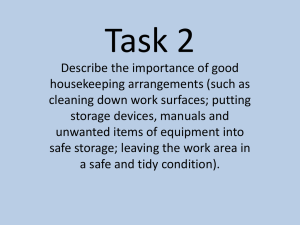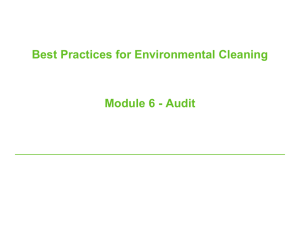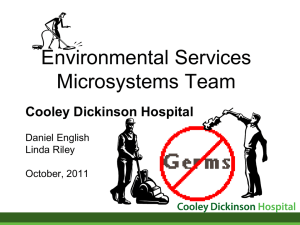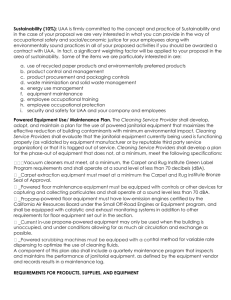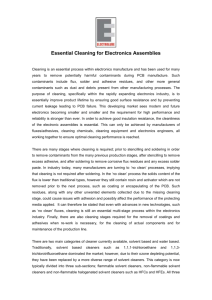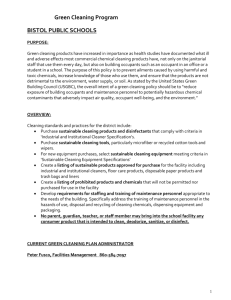Hospital Acquired Infections in Canada, and how to stop them
advertisement
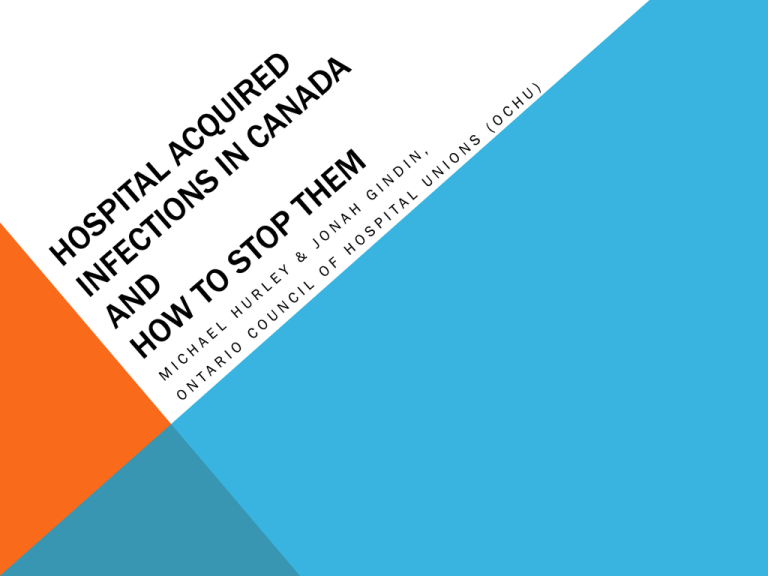
Poor collection of Hospital Acquired Infection (HAI) data in Canada 10.5% of admissions result in a HAI (Public Health Agency of Canada) This means: 330,000 HAIs in Canada each year 12,000-18,000 deaths 3rd leading cause of death, after cancer and heart disease Annual cost to Canadian health system: $1—9 Billion WHY? OVERCROWDING Academic literature shows that high occupancy rates increase risks of superbug infection Specifically, occupancy rates below 82% have been associated with significantly decreased levels of infection Canada has hospital occupancy rate of 89%, higher than any other Organization of Economic Cooperation and Development (OECD) country Less hospital beds than any other OECD country, after Mexico. ONTARIO? WORST PROVINCE Ontario has less hospital beds than any other province, less than Mexico, about the same number as Haiti (the poorest country in the Western Hemisphere). When 91 patients died at Joseph Brant Memorial Hospital it was regularly operating at 105% capacity WHY? CUTS TO CLEANING Academic literature shows that: Superbugs can survive in hospital environment Can be transferred from environment to hands Exposure to contaminated environment is associated with colonization Environment cleaning can reduce risk of infection Yet governments and hospitals look to cleaning for cost-savings “Just because it’s a public healthcare system doesn’t mean that we…should expect to pay more to sweep the floor in a hospital.” When there’s an outbreak, hospitals end up hiring more cleaners (after the fact): Honoré Mercier, QC: 16 deaths. Hospital hired ten additional cleaners to control outbreak Nanaimo General Regional Hospital, BC: 8 deaths, hospital tried to get out of contract with private cleaning firm Compass due to negligence, but was contractually unable Niagara Health System, ON: 16 deaths, NHS cut ties with private cleaning firm Aramark after allegations they cut staff and cleaning supplies resulting in outbreak Burnaby Hospital, BC: 84 deaths, hospital department heads wrote open letter to government demanding enhanced cleaning to stop outbreaks Housekeeping as a proportion of total hospital budget 3.50% 3.00% 2.50% 2.00% 1.50% 1.00% 0.50% 0.00% 2000 2001 2002 2003 2004 2005 2006 2007 2008 2009 Housekeeping as a proportion of total hospital budget From 2000 to 2009 the proportion of hospital budgets going to cleaning dropped by 25% 10.00% Annual % Increase in Hospital and Houseekeping Funding 5.00% 0.00% 2000 2001 2002 2003 2004 2005 2006 2007 2008 2009 -5.00% -10.00% -15.00% Hospital Funding Housekeeping Funding Erratic increases and cuts to cleaning reflect attempts to cut costs, only to have to reinvest after outbreaks or other cleaning needs’ spike. B.C. government legislates contracting-out of hospital cleaners in 2003, proportion of cleaning budgets diverted to private contracts has jumped from 3% to 60% since 2003 Privatization nearly halved wages for BC hospital cleaners, rolling them back to pre-1968 levels Those working for private contractors are now the lowest paid health services support workers in all of Canada, earning 26 per cent below the national average. One study of contract cleaners found 75% were understaffed, 1/3 did work without training, were limited to only one pair of gloves per shift Cleaning is a labour-intensive job: staff account for about 93% of cleaning budgets, so when cleaning budgets are cut it translates directly into fewer cleaning hours In 2004-05 rates of MRSA doubled in B.C./Alberta Since 2008, B.C. has highest rate of C.diff in country After a 2008 outbreak at Nanaimo General Regional Hospital BC Centre for Disease Control conducted an investigation They found that private cleaning company Compass Group failed to: Provide adquate training to cleaners Sufficient cleaners to meet agreed standards in their contract Sufficient cleaners to meet needs during outbreak Poor training and limited cleaning supplies resulted in cleaners overdiluting bleach (1:1000 bleach to water, instead of 1:10), which was determined to have contributed to the outbreak WHO DOES IT BETTER? NETHERLANDS “Search & Destroy” strategy involving screening, cohorting and intensive disinfection has kept MRSA infections very low in Netherlands “Search & Destroy” is also cheaper even though it is labour intensive (because prevented infections save health system $millions) At only 64%, Netherlands has one of lowest hospital occupancy rates in OECD WHO DOES IT BETTER? SCOTLAND Health ministry bringing all hospital cleaning back in-house Added 1,000 extra cleaners Have added staff and have involved them in infection-control Strategy has reduced C.diff 37% in patients over 65, and 42% in those under 65 SO, WHAT IS OCHU DOING ABOUT IT?!


